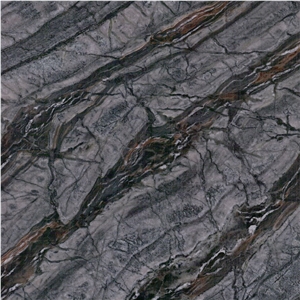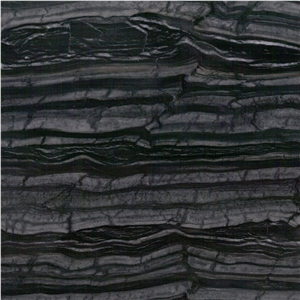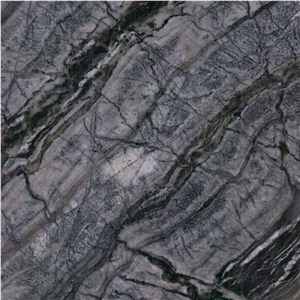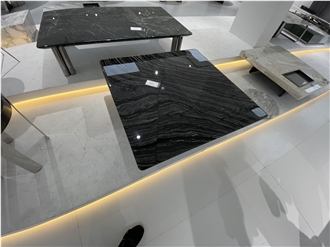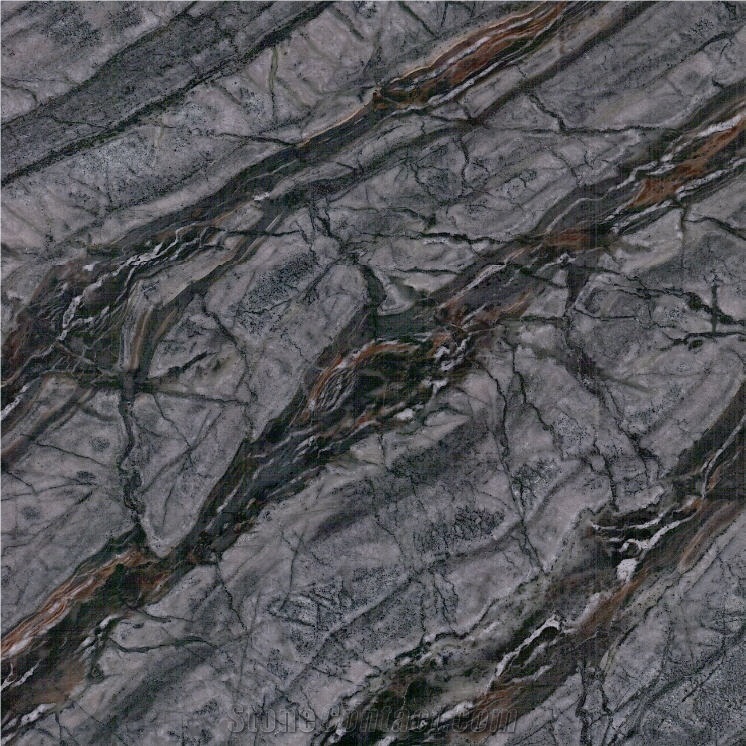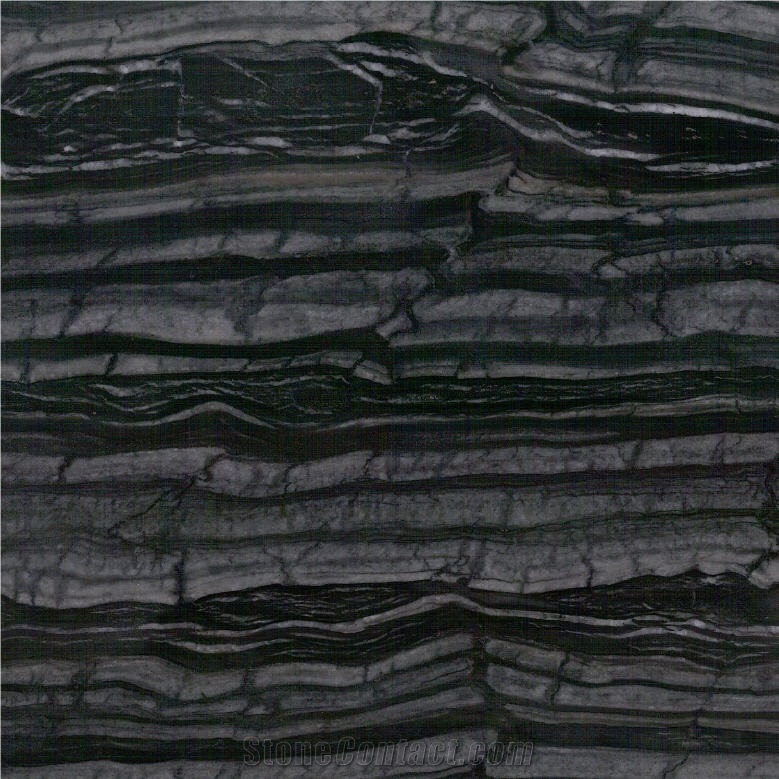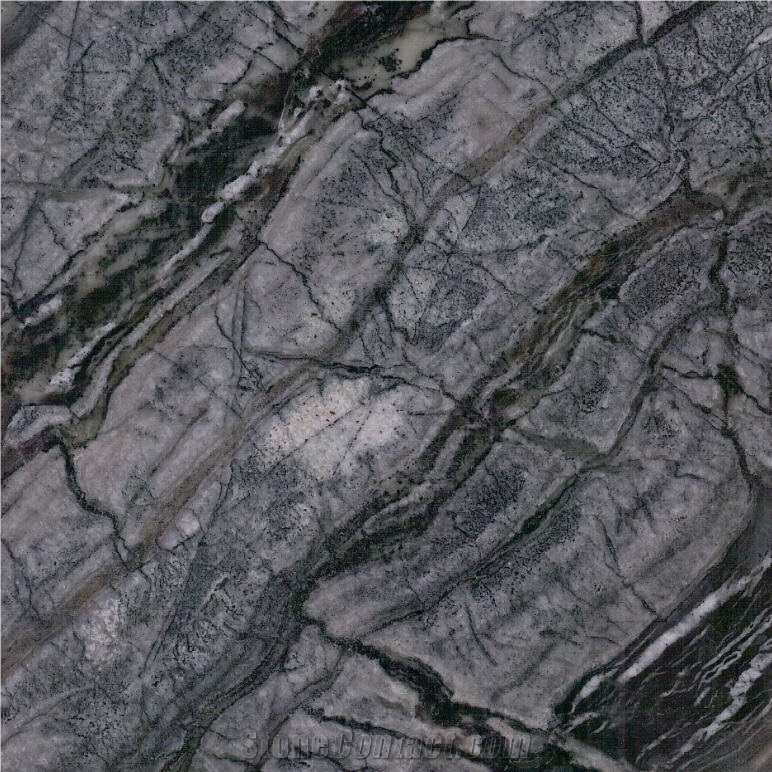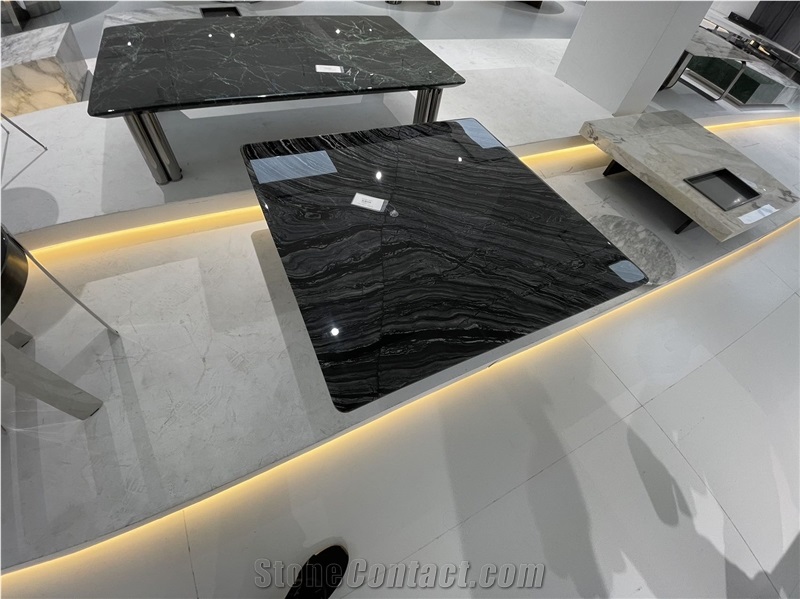Ancient Wood Grain Marble
 China
China
Ancient Wood Grain Marble, also known as Black Wooden Marble, is a distinctive marble quarried in China. It is characterized by its black and gray veined wooden texture, which resembles the natural grain patterns found in wood. The marble features a unique combination of dark hues and intricate veining, creating a visually striking appearance. Ancient Wood Grain Marble is often sought after for its elegant and sophisticated look, making it a popular choice for various interior applications such as countertops, wall cladding, and flooring. Its resemblance to wood grain adds a touch of natural beauty and warmth to any space.

Can China's Ancient Wood Grain Marble be used exterior applications in very dusty climates?

Is China's Ancient Wood Grain Marble an expensive stone?

How do you antique Ancient Wood Grain Marble?

Can I use Ancient Wood Grain Marble for a kitchen sink?

Is Ancient Wood Grain Marble or granite better for stairs?

What is the minimum depth of a Ancient Wood Grain Marble reception desk?

How far should Ancient Wood Grain Marble reception desk be from wall?

What happens if Ancient Wood Grain Marble gets too hot?

Are there color variations of China's Ancient Wood Grain Marble?

Does chlorine affect Ancient Wood Grain Marble?

Can Ancient Wood Grain Marble be given a flamed surface treatment?

Can heat cause Ancient Wood Grain Marble fireplace to crack?

What grade is China's Ancient Wood Grain Marble?

What is the coefficient of friction of Combed China's Ancient Wood Grain Marble tiles?

What is antique finish Ancient Wood Grain Marble?

What is sandblasted finish Ancient Wood Grain Marble?

Can China's Ancient Wood Grain Marble be used in landscaping?

How thick is China's Ancient Wood Grain Marble slabs?

Are Ancient Wood Grain Marble sinks hard to clean?

Can I use vinegar on Ancient Wood Grain Marble sink?

How does Ancient Wood Grain Marble countertop react to heat?

Can China's Ancient Wood Grain Marble be used in a dining room?

What is the standard size of Ancient Wood Grain Marble reception table?

Are polished Ancient Wood Grain Marble steps slippery?

Is Ancient Wood Grain Marble good for swimming pool?

Can China's Ancient Wood Grain Marble be used outdoors?

Is Ancient Wood Grain Marble heat tolerant?
-

Shenzhen Chiva Industry Co., Ltd.
 China
China
 11YRDiamond members are premium members on platform, providing members with comprehensive approach to promoting their products, increasing products exposure and investment return to maximize.
11YRDiamond members are premium members on platform, providing members with comprehensive approach to promoting their products, increasing products exposure and investment return to maximize.
 Verified Supplier is for prove company authenticity,including business license,trade license and effective office space,to enhance buyers' trust to suppliers and their products, reducing communication costs.
Verified Supplier is for prove company authenticity,including business license,trade license and effective office space,to enhance buyers' trust to suppliers and their products, reducing communication costs.
Contact Supplier
-

Xiamen Paia Import & Export Co.,Ltd.
 China
China
 7YRDiamond members are premium members on platform, providing members with comprehensive approach to promoting their products, increasing products exposure and investment return to maximize.
7YRDiamond members are premium members on platform, providing members with comprehensive approach to promoting their products, increasing products exposure and investment return to maximize.
 Verified Supplier is for prove company authenticity,including business license,trade license and effective office space,to enhance buyers' trust to suppliers and their products, reducing communication costs.
Verified Supplier is for prove company authenticity,including business license,trade license and effective office space,to enhance buyers' trust to suppliers and their products, reducing communication costs.
Contact Supplier
-

 China
China
 12YRDiamond members are premium members on platform, providing members with comprehensive approach to promoting their products, increasing products exposure and investment return to maximize.
12YRDiamond members are premium members on platform, providing members with comprehensive approach to promoting their products, increasing products exposure and investment return to maximize.
 Verified Supplier is for prove company authenticity,including business license,trade license and effective office space,to enhance buyers' trust to suppliers and their products, reducing communication costs.
Verified Supplier is for prove company authenticity,including business license,trade license and effective office space,to enhance buyers' trust to suppliers and their products, reducing communication costs.
Contact Supplier
-

XIAMEN SINO TOPSTONE IMP&EXP TRADE CO.,LTD
 China
China
 Verified Supplier is for prove company authenticity,including business license,trade license and effective office space,to enhance buyers' trust to suppliers and their products, reducing communication costs.
Verified Supplier is for prove company authenticity,including business license,trade license and effective office space,to enhance buyers' trust to suppliers and their products, reducing communication costs.
Contact Supplier
-

XIAMEN YONGFENG STONE CO., LTD
 China
China
 10YRDiamond members are premium members on platform, providing members with comprehensive approach to promoting their products, increasing products exposure and investment return to maximize.
10YRDiamond members are premium members on platform, providing members with comprehensive approach to promoting their products, increasing products exposure and investment return to maximize.
 Verified Supplier is for prove company authenticity,including business license,trade license and effective office space,to enhance buyers' trust to suppliers and their products, reducing communication costs.
Verified Supplier is for prove company authenticity,including business license,trade license and effective office space,to enhance buyers' trust to suppliers and their products, reducing communication costs.
Contact Supplier
-

QUANZHOU LINLEI IMP. & EXP.TRADING CO.,LTD.
 China
China
 6YRDiamond members are premium members on platform, providing members with comprehensive approach to promoting their products, increasing products exposure and investment return to maximize.
6YRDiamond members are premium members on platform, providing members with comprehensive approach to promoting their products, increasing products exposure and investment return to maximize.
 Verified Supplier is for prove company authenticity,including business license,trade license and effective office space,to enhance buyers' trust to suppliers and their products, reducing communication costs.
Verified Supplier is for prove company authenticity,including business license,trade license and effective office space,to enhance buyers' trust to suppliers and their products, reducing communication costs.
Contact Supplier
-

 China
China
 6YRDiamond members are premium members on platform, providing members with comprehensive approach to promoting their products, increasing products exposure and investment return to maximize.
6YRDiamond members are premium members on platform, providing members with comprehensive approach to promoting their products, increasing products exposure and investment return to maximize.
 Verified Supplier is for prove company authenticity,including business license,trade license and effective office space,to enhance buyers' trust to suppliers and their products, reducing communication costs.
Verified Supplier is for prove company authenticity,including business license,trade license and effective office space,to enhance buyers' trust to suppliers and their products, reducing communication costs.
Contact Supplier
-

-

XIAMEN TOP STARS STONE COMPANY LIMITED
 China
China
 10YRDiamond members are premium members on platform, providing members with comprehensive approach to promoting their products, increasing products exposure and investment return to maximize.
10YRDiamond members are premium members on platform, providing members with comprehensive approach to promoting their products, increasing products exposure and investment return to maximize.
 Verified Supplier is for prove company authenticity,including business license,trade license and effective office space,to enhance buyers' trust to suppliers and their products, reducing communication costs.
Verified Supplier is for prove company authenticity,including business license,trade license and effective office space,to enhance buyers' trust to suppliers and their products, reducing communication costs.
Contact Supplier
-

 China
China
 8YRDiamond members are premium members on platform, providing members with comprehensive approach to promoting their products, increasing products exposure and investment return to maximize.
8YRDiamond members are premium members on platform, providing members with comprehensive approach to promoting their products, increasing products exposure and investment return to maximize.
 Verified Supplier is for prove company authenticity,including business license,trade license and effective office space,to enhance buyers' trust to suppliers and their products, reducing communication costs.
Verified Supplier is for prove company authenticity,including business license,trade license and effective office space,to enhance buyers' trust to suppliers and their products, reducing communication costs.
Contact Supplier
The request includes: 1. surface finished, size 2. quantity required






